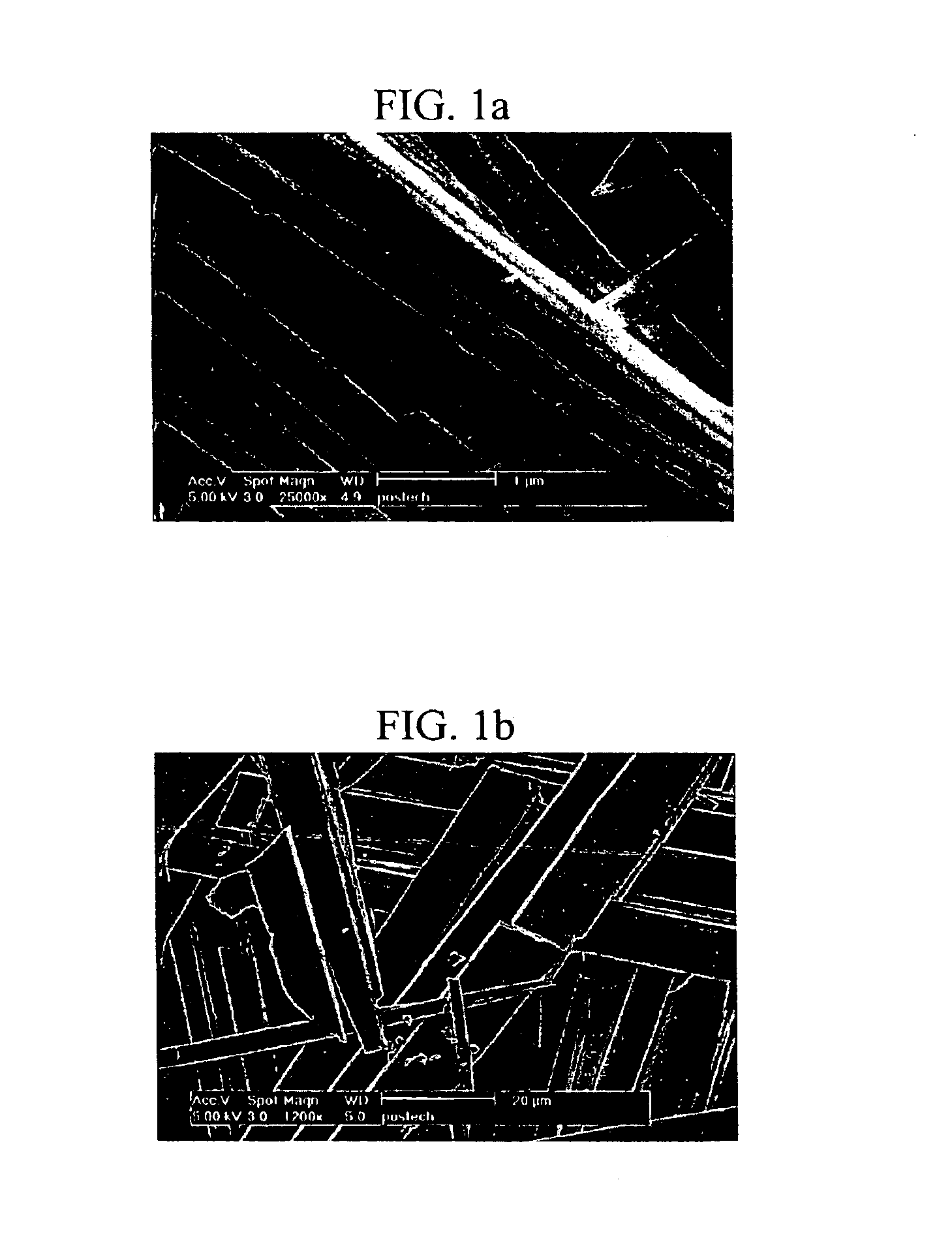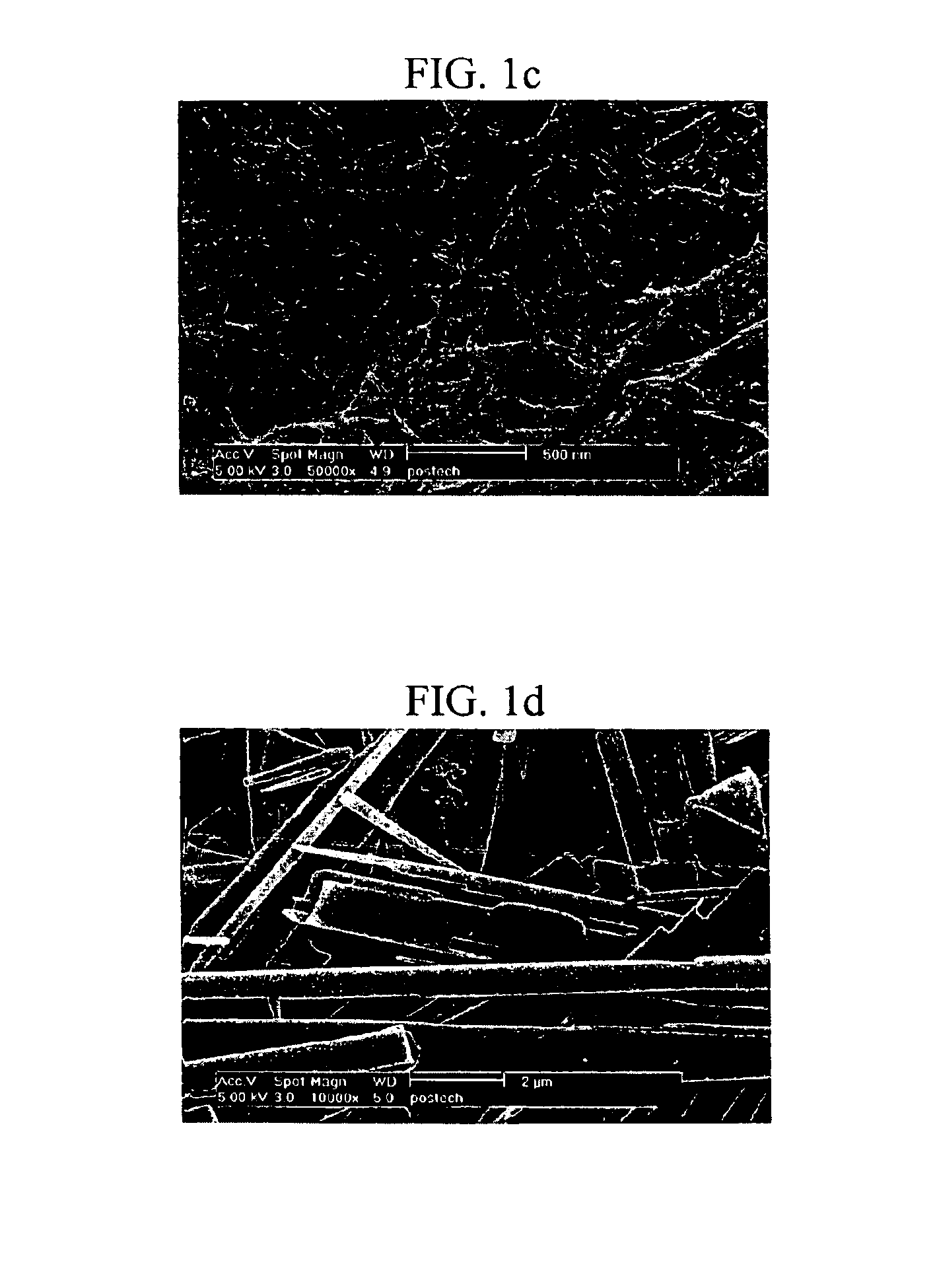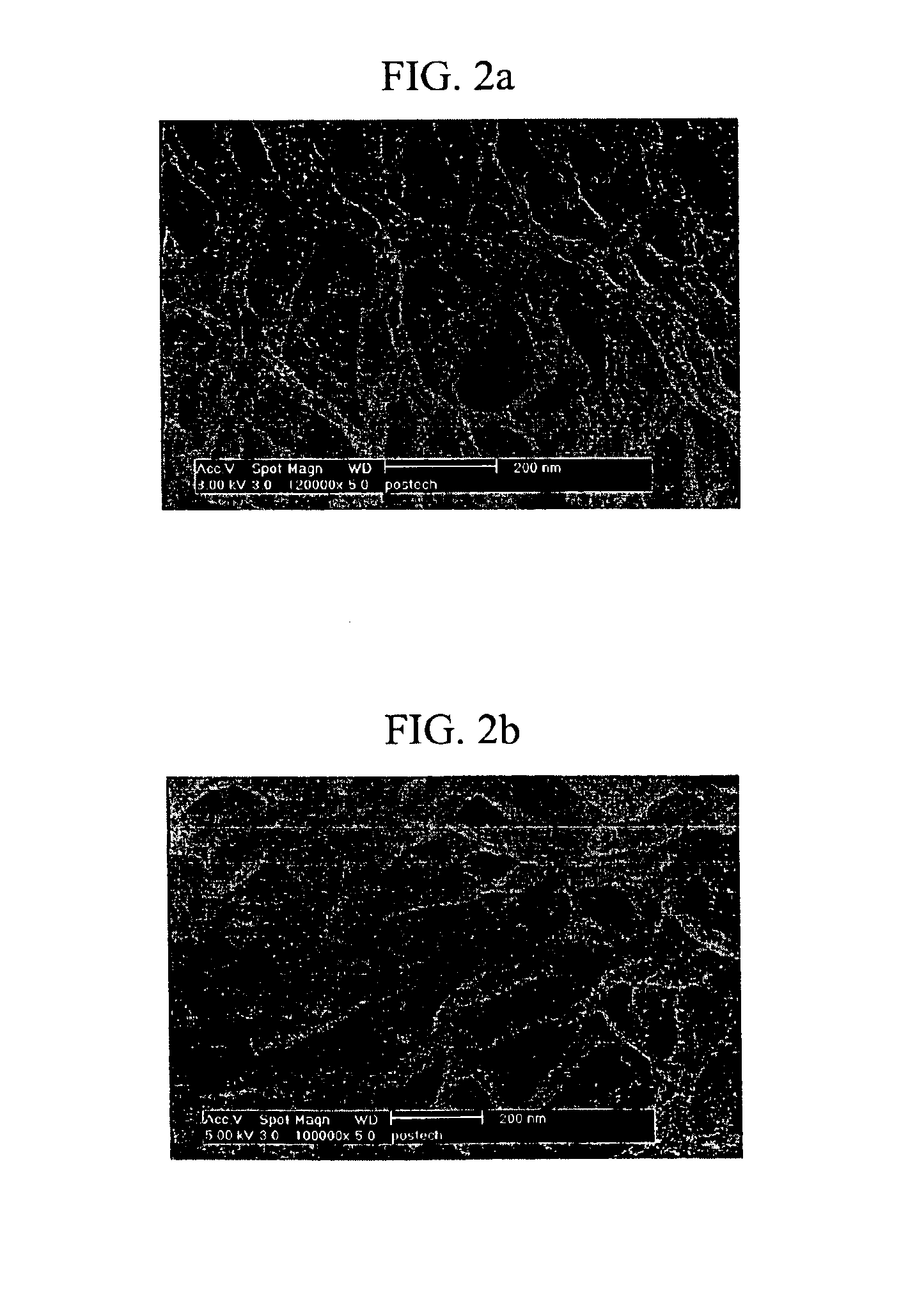2'-deoxyuridine derivatives and hydrogels formed therewith
a deoxyuridine and hydrogel technology, applied in the field of 2′deoxyuridine derivatives, can solve the problems of unsatisfactory drug delivery of conventional hydrogels based on high molecular weight polymers, and achieve the effect of good thermal stability and low molecular weigh
- Summary
- Abstract
- Description
- Claims
- Application Information
AI Technical Summary
Benefits of technology
Problems solved by technology
Method used
Image
Examples
example 1
Preparation of 2′-deoxyuridine Derivatives
1-1) Preparation of 2′-deoxy-5-iodo-5′-O-(4-methoxytrityl)-uridine
[0024]2 g of 5-iodo-2′-deoxyuridine (5.65 mmole) was dissolved in 30 ml of pyridine, 5 ml of TEA and 2.16 g of MMTr-Cl (6.99 mmole) were sequentially added thereto, and stirred at room temperature for 4 hours. Then, pyridine was removed under a reduced pressure with a rotary evaporator, the residue was treated with a mixture of water and CH2Cl2, the CH2Cl2 layer was separated, dried under MgSO4, and then, CH2Cl2 was removed under a reduced pressure. The resulting residue was subjected to column chromatography (silica gel 60, 230˜400 meshes, Merck) to obtain the title compound as a pale yellow solid. The chromatography was conducted using a mixture of CH2Cl2 and methanol as an eluting solution whose mix ratio was gradually changed from 100:1 to 50:1 (v / v).
[0025]Yield: 2.89 g (82%);
[0026]Melting point: 131.5-132.7° C.;
[0027]1H NMR (300 MHz, Acetone-d6) δ 8.13(s, 1H), 7.50-7.53(m...
example 2
Gelation Test
[0170]In order to determine the extent of gelation of the 2′-deoxyuridine derivative of the present invention, the “stable-to-inversion-of-the-container” method was performed (see F. M. Menger and K. L Caran., J. Am. Chem. Soc., 122, 11679, 2000).
[0171]Each of 2′-deoxyuridine derivatives prepared in Example 1 was mixed with water in an amount corresponding to a concentration of 2 wt %, completely dissolved by sonication and heating, and then cooled at room temperature for 20 minutes to induce the formation of a gel. Then, the vessel containing the gel was inverted to see whether or not the content poured out. The gel was called “stable” in case that the content did not pour out, and “unstable”, when the content poured out.
[0172]Further, the minimum concentration at which a gel was formed (hereinafter, minimum gel concentration) was measured for each of the 2′-deoxyuridine derivatives. The results are represented in Table 1.
[0173]
TABLE 1Minimum 2′-deoxy derivativegel con...
example 3
Observation of Inner Structures of Gels Prepared from the 2′-Deoxyuridine Derivatives
[0175]The aggregation mode of the gel formed with the 2′-deoxyurindine derivative was observed by Scanning Electron Microscopy (SEM). Gels were prepared using the 2′-deoxyuridine derivatives prepared in 1-4), 1-7), 1-9) and 1-10) by the method of Example 2. Each of the gels was heated to obtain a sol, and a small amount of the sol was converted to a gel cake, which was lyophilized under a vacuum at the liquid nitrogen temperature to remove the solvent, coated with platinum, and examined by SEM.
[0176]The SEM images showed that the 2′-deoxyuridine derivatives prepared in 1-4), 1-7) and 1-10) formed gels having a lamellar structure, while the 2′-deoxyuridine derivative prepared in 1-9) formed a gel having a fiber structure. The fiber structure can retain more water than the lamellar structure, and therefore, the 2′-deoxyuridine derivative prepared in 1-9) forms a gel at a minimum concentration.
[0177]Wh...
PUM
| Property | Measurement | Unit |
|---|---|---|
| temperature | aaaaa | aaaaa |
| melting point | aaaaa | aaaaa |
| melting point | aaaaa | aaaaa |
Abstract
Description
Claims
Application Information
 Login to View More
Login to View More - R&D
- Intellectual Property
- Life Sciences
- Materials
- Tech Scout
- Unparalleled Data Quality
- Higher Quality Content
- 60% Fewer Hallucinations
Browse by: Latest US Patents, China's latest patents, Technical Efficacy Thesaurus, Application Domain, Technology Topic, Popular Technical Reports.
© 2025 PatSnap. All rights reserved.Legal|Privacy policy|Modern Slavery Act Transparency Statement|Sitemap|About US| Contact US: help@patsnap.com



